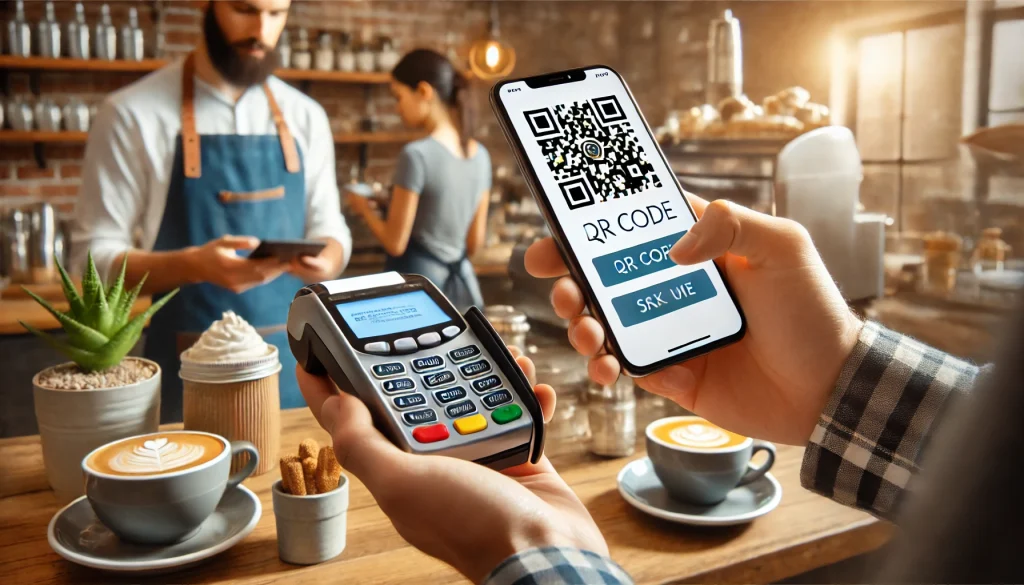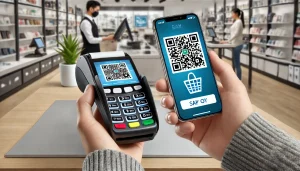QR Code payments are revolutionizing the way we handle transactions by offering a seamless, contactless payment solution. As consumers around the world look for safer and more efficient ways to pay, the popularity of QR Code payments has surged, particularly in the United States. This payment method has become increasingly relevant after the pandemic, when people sought to minimize physical contact.
This article aims to delve into the mechanics of QR Code payments and explore their benefits while addressing some challenges and future prospects. With their ever-growing application, QR Code payments promise to streamline financial transactions and integrate effortlessly into our digital lives.
How QR Code payments work

At the heart of QR Code payments lies a straightforward process that involves scanning, validation, and transaction completion. Using a smartphone or a compatible device, consumers simply scan the QR code presented by the merchant. Once scanned, the system validates the payment by linking the consumer’s digital wallet or banking app, prompting the transaction.
The technology supporting these payments primarily involves banks, fintechs, and popular apps, which integrate seamlessly with user accounts. Examples of widespread adoption include retail giants, restaurants, and emerging tech companies, all embracing this technology for its ease of use. As these payment methods continue to gain traction, a diverse range of industries are recognizing the potential benefits offered by QR Code payments.
The simplicity and versatility of QR Code payments have encouraged sectors to innovate and adopt this efficient payment method. From small businesses to large enterprises, QR codes are often used in customer-facing areas, streamlining the checkout experience. The growing reliance on mobile technology further drives the use of QR codes, providing a bridge between traditional banking and modern financial solutions.
Advantages of QR Code payments for consumers
One of the primary benefits of QR Code payments is the unparalleled convenience they provide. Transactions can be completed instantaneously without the need for physical cards or cash. This is particularly appealing in today’s fast-paced world, where time-saving solutions are highly valued.
Additionally, QR Code payments offer enhanced security and protection for users. By reducing the need for physical contact with cards or cash, the risk of fraud or theft is significantly minimized. Moreover, the integration of QR Code payments with digital wallets, such as Apple Pay, Google Pay, and PayPal, enhances security measures, further protecting personal information.
This seamless integration also empowers consumers to manage their digital financial activities comprehensively. With QR Code payments being part of digital wallets, users can effortlessly control their finances, track spending, and even benefit from incentives like cashback and rewards. The synergy between QR Code payments and digital wallets fortifies financial confidence and encourages broader adoption.
Impact on personal financial management
The use of QR Code payments facilitates more efficient personal financial management through apps that provide detailed transaction overviews. Consumers can leverage these tools to gain insights into their spending patterns and make informed decisions.
Moreover, QR Code payments can encourage individuals to explore various financial programs such as cashbacks and loyalty rewards, thus maximizing the value of their transactions. By integrating payment systems with such programs, users can enjoy tangible benefits, incentivizing the adoption of QR Code payments.
Consequently, individuals gain greater control over their finances, empowered to optimize their resources with minimal effort. These financial advantages are becoming more evident as consumers explore new and intelligent ways to manage their spending, highlighting the value of QR Code payments in achieving financial wellness.
Challenges and limitations of QR Code payments in the USA
Despite the many advantages, QR Code payments in the USA still face challenges, primarily due to limited acceptance in certain regions and establishments. This can hinder widespread adoption, particularly in areas where traditional payment methods remain predominant.
Security and fraud risks pose another significant challenge, especially with the digital nature of QR Code payments. Consumers may be susceptible to scams if proper protective measures aren’t implemented. Consequently, ongoing education and technological improvements are essential to enhance consumer trust and reduce vulnerabilities.
Furthermore, reliance on internet connectivity is a limitation that can affect the accessibility and reliability of QR Code transactions. In areas with unstable connectivity, completing transactions can be challenging. Solutions to improve offline functionality are critical in ensuring QR Code payments become a universally reliable alternative to cash and card transactions.
The future of QR Code payments in the USA
The future of QR Code payments in America is promising, with projected growth and trends indicating increased adoption. Innovations like artificial intelligence and cryptocurrencies are expected to integrate with QR Code payment systems, unlocking new possibilities.
Additionally, the transition towards cashless transactions could see QR Code payments potentially replacing physical money and traditional cards. As tech-savvy consumers and businesses continue to prioritize streamlined financial solutions, the demand for QR Code payments is expected to rise.
The evolving landscape of payment solutions invites exciting opportunities for growth and innovation in the sector. As society shifts towards digital-first approaches, QR Code payments are poised to become foundational to the future of financial transactions in the United States.







